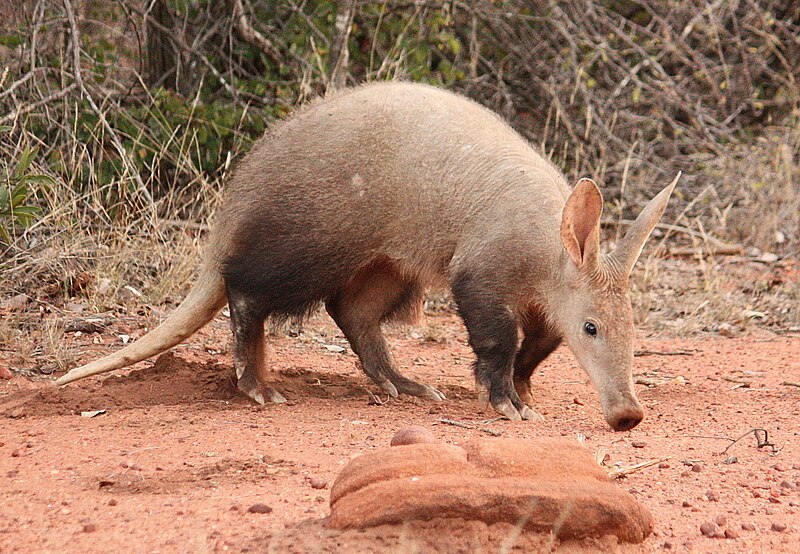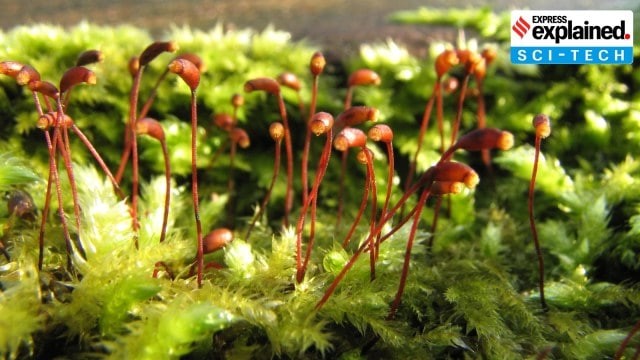Description

Disclaimer: Copyright infringement not intended.
Context
- Aardvarks are crucial for sub-Saharan Africa’s ecosystem — but climate change is impacting their chances of survival.
Aardvarks:
Species and Habitat:
- Aardvarks (Orycteropus afer) are mammalian species native to Africa.
- They are primarily found in savannas, grasslands, and open woodlands.
Physical Characteristics:
- Aardvarks have a unique appearance, resembling a combination of different animals. They have a long snout, large ears, and a tail.
- They possess strong limbs and large claws, which are adapted for digging.
Nocturnal Behavior:
- Aardvarks are nocturnal, meaning they are active during the night and rest during the day.
- Their nocturnal behavior helps them avoid predators and overheating in the hot African sun.
Diet:
- The primary diet of aardvarks consists of ants and termites.
- They use their sharp claws to dig into termite mounds and ant nests.
Conservation Status:
- Aardvarks are generally not considered endangered, but certain threats may affect their populations.
- Factors such as habitat loss, human-wildlife conflict, and climate change can impact their well-being.
- It has received an official designation from the IUCN as least concern.
Ecosystem Role:
- Aardvarks play a crucial role in controlling termite and ant populations, influencing the balance of their ecosystems.
Cultural Significance:
- In African folklore and traditions, aardvarks may have cultural significance.
- They are not commonly featured in global cultures but may play a role in local myths and stories.
.jpg)
Ecological Significance of Aardvarks:
Role in Controlling Insect Populations:
- Aardvarks primarily feed on ants and termites, helping to control their populations.
- By regulating insect numbers, aardvarks contribute to the balance of the ecosystem, preventing overpopulation of certain insect species.
Ecosystem Engineers:
- Aardvarks are skilled diggers, creating burrows that serve as shelters for themselves and other animals.
- The abandoned burrows are used by various species, contributing to the biodiversity of the ecosystem.
Nutrient Cycling:
- Aardvarks play a role in nutrient cycling as they dig and aerate the soil during their foraging activities.
- This can impact soil health and vegetation dynamics in their habitat.
Impact of Climate Change:
Altered Habitat and Food Availability:
- Climate change can lead to shifts in temperature and precipitation patterns, impacting the distribution of vegetation and the availability of aardvarks' preferred food sources.
- Changes in vegetation can affect the availability and distribution of ants and termites.
Increased Heat Stress:
- Aardvarks are nocturnal to avoid the heat of the day. Changes in temperature and increased heatwaves due to climate change can disrupt their behavioral patterns.
- Extended periods of high temperatures may lead to increased stress on aardvarks, affecting their health and reproduction.
Water Scarcity:
- Changes in precipitation patterns and increased drought frequency can lead to water scarcity, impacting aardvarks' ability to find water for drinking and maintaining their physiological balance.
Habitat Loss:
- Climate-induced changes, such as altered fire regimes or shifts in vegetation types, can contribute to habitat loss for aardvarks.
- Loss of suitable habitats can limit their foraging and burrowing opportunities.
Impact on Other Species:
- Changes in aardvark populations can have cascading effects on other species that depend on aardvark burrows for shelter.
Conservation Implications:
Monitoring and Research:
- Continuous monitoring of aardvark populations and research on their behavior and responses to climate change are crucial for conservation efforts.
Habitat Protection and Restoration:
- Efforts to protect and restore aardvark habitats, including maintaining natural vegetation and preventing habitat fragmentation, are essential.
Climate Change Mitigation:
- Addressing the root causes of climate change through global efforts to reduce greenhouse gas emissions is necessary to mitigate the impact on aardvarks and other vulnerable species.
Adaptive Management:
- Implementing adaptive management strategies that consider the changing climate and its impact on aardvark habitats and behaviors.

Conclusion
- In conclusion, aardvarks play a vital role in maintaining the health and balance of sub-Saharan Africa’s ecosystems.
- Climate change poses significant challenges to their survival, emphasizing the need for comprehensive conservation measures and global efforts to address climate-related issues.
|
PRACTICE QUESTION
Q. What is the ecological significance of Aardvarks in their native habitat and the challenges they face due to climate change? Analyze.
|












